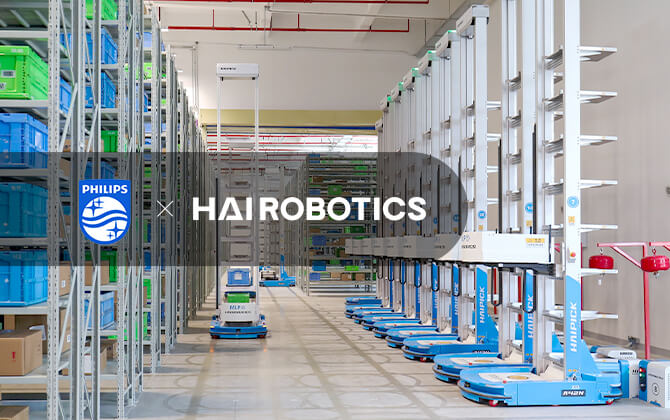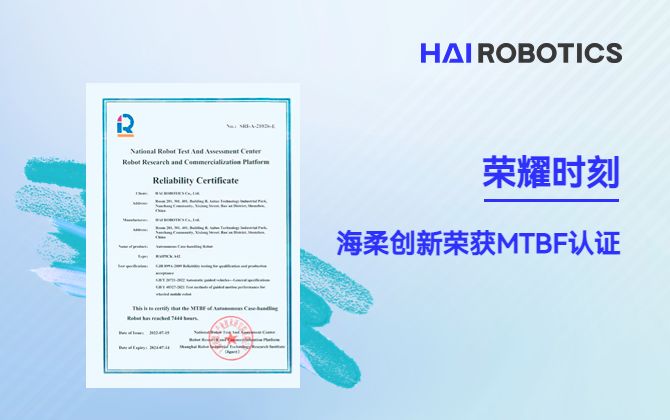《南华早报》:独角兽海柔创新着眼国际市场
上周,《南华早报》刊登了对海柔创新联合创始人兼首席运营官房冰的专访报道,称公司着眼国际市场,目标今年海外业务占公司总业务量的一半。

海柔创新着眼国际市场
报道称,根据行业咨询机构LogisticsIQ数据,全球拣选机器人市场体量将会在2027年达到410亿美金。房冰在采访中表示,尽管公司目前70%的客户来自中国,但海外市场潜力巨大,因为在海柔创新从事的仓储物流自动化行业中,劳动力昂贵的地方对机器人的需求更大。
房冰表示,目前世界各地的企业都面临着供应链和劳动力方面的挑战,因此海柔创新也在加速国际市场布局,目标是今年海外业务占总量一半。
报道称,海柔创新的创立起源于香港,其中两位联合创始人陈宇奇和房冰曾就读于香港理工大学。
房冰表示,他们与另一位联合创始人徐圣东在2015年决定创业之时的“初心”,是希望用机器人技术缓解人口老龄化的挑战。后来他们遇到了以孵化中国无人机巨头大疆而闻名的香港科技大学工程学教授李泽湘。房冰回忆,是李泽湘建议他们研究机器人和自动化。
基于此,三位创始人成立海柔创新,设计研发出了“料箱到人”的ACR箱式仓储机器人系统,可节省60%至70%的人力,并将工人“从重复性和劳动密集型工作中解放出来”。
报道称,随着投资者不断向人工智能和机器人行业注入资金,公司一直在快速扩张。仅在去年,海柔创新就通过三轮融资筹集了超过2亿美元,来自包括红杉资本中国、源码资本和五源资本等在内的多家风投公司。
如今,海柔创新在全球已经落地了500多个项目,公司目前拥有1600名员工,客户包括飞利浦、顺丰DHL、利丰、安踏、booktopia等全球各地、各行业的公司。
公司还与美国两家仓储物流自动化公司Tompkins Robotics和Storage Solutions达成战略合作,共同开发北美市场。
专访原文摘选:
Hai Robotics, founded in 2015, makes robots for moving and sorting boxes in warehouses, a market estimated to reach US$41 billion globally by 2027 amid widespread automation, according to research firm LogisticsIQ.
While 70 per cent of Hai Robotics’ current customers are from China, it sees a future outside the domestic market, said Fang Bing, co-founder and chief operating officer. “We’re in the business of replacing workers with machines, and machines are [correspondingly] more expensive where manual labour is expensive,” Fang said. “So the overall market size for us is bigger overseas, especially when supply chain disruption and labour shortages present big problems for companies around the world.”
As part of this expansion, the company last month reached strategic cooperation deals with Tompkins Robotics and Storage Solutions, two American peers, to jointly develop robots for the US market, according to information on its website.
Hai Robotics, which currently employs 1,600 people, designed its first warehouse robots to be able to pick up and move individual cases used to store goods with its own technology, known as autonomous case-handling robotic (ACR) system.
Hai Robotics says its system can replace 60 to 70 per cent of warehouse workers, where their typical function is to walk around a warehouse looking for items. Fang said that it benefits young workers, as they can be freed up from repetitive and labour intensive work.
“It’s hot inside warehouses and the work is strenuous. Workers need to walk up to 60,000 steps every day,” Fang said. “It’s getting harder for warehouses to hire this type of worker as people are less willing to do such work nowadays.”
The company has been expanding rapidly as investors continue to pour money into China’s artificial intelligence and robotics industry. In the last year alone, Hai Robotics raised more than US$200 million in three rounds of fundraising, from major venture capital firms including Sequoia Capital China, Source Code Capital and 5Y Capital.
Hai Robotics has its roots in Hong Kong, where two of the co-founders Fang and Richie Chen were undergraduates in electrical engineering at the Hong Kong Polytechnic University. Their first start-up making a type of equipment used in scientific research was a success, according to Fang, and they wanted to move on to creating a business with a bigger market. With a third co-founder, Xu Shengdong, they met Li Zexiang, a professor of engineering at the Hong Kong University of Science and Technology, who famously incubated Chinese drone giant DJI. Li suggested that they look into robotics and automation, Fang said.

